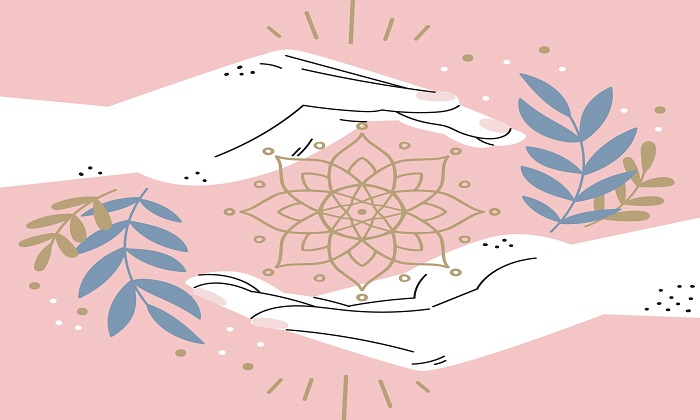
“Music can heal wounds that medicine cannot reach” – Indian folklore is replete with stories of the healing powers of music; stories that seemed to be myths a decade ago are now proving to be allegorical references to a supplementary system of medicine. Raga therapy or Indian ragas-based music therapy has been gaining widespread popularity and acceptance to treat psychological, neurological and behavioral problems.
Ragas in Indian music
Raga, in Indian music, is a specific combination of notes or microtones. While the Hindustani or
North Indian classical music system specifies a particular scheme in which different ragas are sung at different times of the day - for them to be truly effectual to the mind, the Carnatic or South Indian classical system associates a raga with a primary emotion that it can induce. The basis for the either system can be inferred to be the same, that ragas have psychophysiological impact. This doesn’t seem unfounded: a mother crooning to her crying baby settles the child down; music intrinsically helps calm a disturbed mind. A systemic extension of this axiom, must therefore, yield appreciable results.
What is Raga therapy?
Although, there is no universally agreed system for raga therapy yet, general practice involves using ragas and their effects to treat certain states of the mind, making the treatment patient specific as well as anecdotal. Since each raga is associated with certain emotions that it can trigger, ragas are used to amplify or alter the listener’s mood and mental state. The music used in raga therapy is generally but not necessarily, non-rhythmic, instrumental music or music without words, to minimize distractions.
Many practitioners also use raga therapy in conjunction with Ayurveda, to reap greater benefits. By associating a raga with a specific time of the day, imbalances in the chronobiological cycles of the body are treated using the time-specific ragas
What can Raga therapy cure?
It is proven that raga therapy effectively reduces symptoms when treating patients with conditions like depression, stress and anxiety, for palliative care and general emotional well-being. Also, many hospitals have successfully used
Carnatic music ragas to alleviate post-operative pain. Some forms of therapy encourage the patient to sing along, to treat speaking disorders and autism.
But the efficacy of raga therapy as the primary mode of treatment is not established yet. Dr.
Sowmya Sanak of Svarakshema Foundation opines, “We cannot claim to completely cure a person of their condition through only music therapy. But what we can do is, enable the patient to accept their condition and respond better to the primary treatment. At best, raga therapy can be called a complementary form of medication.”
Nada Yoga
Although raga therapy is now an accepted form of medication, the concept can be traced back to
the Upanishads. The Nadabindu Upanishad deals with tuning to and contemplating the Nada or
“Om” which is believed to form the basis of all cosmic vibrations. A practitioner of Nada Yoga begins by concentrating on specific sounds from nature and musical instruments, then differentiating or sensing just one note amongst these to finally becoming aware of the “inner sound” or the rhythm of the body. The goal of the practice of Nada Yoga is to be able to identify and moderate one’s emotions and channelize them to achieve a high degree of consciousness, through meditating on vibrations caused by sound.
Raga therapy in use
Researchers have shown that music therapy affects the brain positively by encouraging the release of dopamine, the “feel-good” hormone apart from activating multiple areas of the brain, that deal with functions like emotions, memory, motor skills and imagination, proving the veracity of using ragas as a form of therapy.
A recent study by Dr. Meenakshi Ravi et al, published in the International Journal of Alternative and Complementary Medicine describes the use of
Carnatic raga therapy used to treat Schizophrenia. The treatment, spanning over a period of 8 years, used various forms of Carnatic compositions and about 36 Carnatic ragas to treat a 20-year-old woman suffering from Schizophrenia. The treatment helped in reducing her symptoms like delusion, hallucination and fear while improving her social skills, mode of expression and confidence.
COVID-Frontline-workers like doctors and police personnel were treated to Carnatic music therapy at the height of the covid pandemic at a prominent hospital in Hyderabad, to help them cope with the stress of long work hours and huge caseloads. Many doctors who underwent the therapy, reported to having better stress response in addition to sleeping better.
Dr. Sowmya has found the use of the Carnatic raga Shree very effective, specially for pregnant
women. “Many times, pregnant women develop anxieties, fear and depression during the course of their term, with varying underlying causes. We recommend such patients to listen to Shree raga. The results have been great, with the patients being able to relax and calm down. Their emotional responses to situations have been positive too.”
But, as with most alternate forms of medicine, the success of raga therapy depends largely on the reception. Music therapy cannot be forced onto someone with no inclination towards music or belief in the methods used. While raga therapy has been shown to have more than mere placebo effect, more systematic, evidence-based studies need to be undertaken on a sizeable population to establish a well-documented, conclusive approach.

